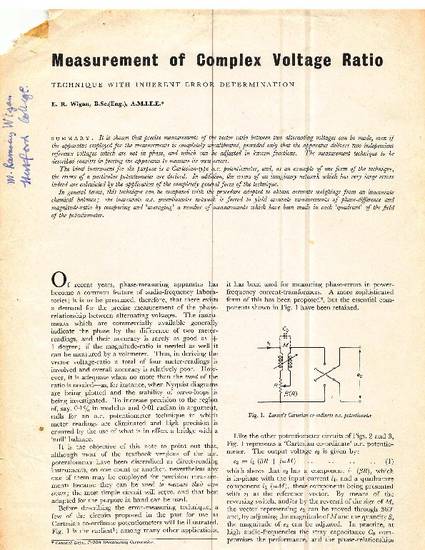
Article
Measurement of Complex Voltage Ratio. Technique with Inherent Error Determination
Electronic Technology
(1960)
Abstract
It is shown that precise measurements of the vector ratio between two alternating voltages can be made, even if the apparatus employed for the measurements is completely uncalibrated, provided only that the apparatus delivers two independent reference voltages which are not in phase, and which can e adjusted in known fractions. The measurement technique to be described consists in forcing the apparatus to measure its own errors. The ideal instrument for the purpose is a Cartesian-type A/C potentiometer,and, as an example of one form of the technique, the errors of a particular potentiometer are derived. In addition, the errors of an imaginary network which has very large errors indeed are calculated by the application of the completely general form of the technique. In general terms, this technique can be compared with the procedure adopted to obtain accurate weighings from an inaccurate chemical balance; the inaccurate. A/C potentiometer network is forced to yield accurate measurements of phase-difference and magnitude-ratio by comparing and 'averaging' a number of measurements which have been made in each 'quadrant' of the field of the potentiometer
Keywords
- Measurement,
- Electrical
Disciplines
Publication Date
Winter November, 1960
Citation Information
Edmund Ramsay Wigan. "Measurement of Complex Voltage Ratio. Technique with Inherent Error Determination" Electronic Technology Vol. 37 (1960) p. 422 - 428 Available at: http://works.bepress.com/edmund-wigan/18/
